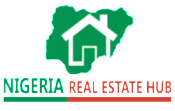Here is a compilation of what you should know about the Nigerian Built Environment, the structure, challenges and what should be done to make it better.
The built environment is the human-made surroundings where people gather to live, work and play. It encompasses both the physical structures where people do these activities and the supporting infrastructure, such as transport, water and energy networks.
Our Built environment is diverse; It ranges from capital and regional cities to small towns in our coastal, rural and remote regions. 46.9% of Nigerians live in urban cites while the annual rate of urbanization from 2011-2015 is put at 3.75%. Lagos alone has a population of over 21 million people. This shows that the Nigerian built environment is facing immense challenges while inadequate urban planning makes the situation even worse
The major challenge facing our built environment is population and economic growth. This has led to an increase in the physical size of cities, higher population densities, greater demands on natural assets within cities and increased congestion. These are impacting on the livability and environmental efficiency of our cities and towns.
Significant parts of the Nigerian built environment have aspects that are considered poor. Traffic congestion, in particular, is of growing concern in the biggest cites.
In Lagos, satisfaction with the road network and traffic congestion is of a very low rating and low ratings have also being recorded in , Ibadan, Port Harcourt and some parts of Abuja.
In recent times the major players have raised concerns about the look and design of our major cites such as Lagos, Abuja, Port Harcourt, Calabar, Ibadan, Uyo and maybe Enugu. There are concerns about the environmental degradation, pollution and maintenance of these cities
The attractiveness of Nigeria’s major cities is considered to be only fair. In the smaller state capital cities and other urban centres with population traffic concerns are far less significant
The residents and industries of the built environment consume natural resources, including water, energy and land. However there is also a dearth in the natural resources available for consumption due to poor and inadequate infrastructure. Waste generation within the built environment also has an impact on the natural environment.
To summarize it all, management of the built environment is characterised by complex arrangements involving all levels of government, as well as the private sector, and these arrangements lack effective coordination. There are also concerns that insufficient investment has been made in infrastructure.
Urban policy and planning in Nigeria have varied with time and in different jurisdictions and institutions. The complexities of arrangements for managing the built environment in Nigeria have a negative impact on management effectiveness—in particular, because of challenges in coordination. Understanding of issues is good, but planning processes to date have only been partly effective, and the budget is often inadequate to deal with issues. The poor level of investment in infrastructure, particularly public transport has led to low outputs and outcomes.
The outlook for the built environment is mixed. The expected increase in the physical size of cities and increased traffic congestion will have negative impacts, but this can be offset by improved management and more efficient use of natural resources. The built environment also puts pressure on natural resources, mainly through the use of land, water and energy resources which means that the stakeholders in the Works, Power and Housing sectors need to go back to the drawing board. The pressure on that ministry to perform effectively is enormous. The Onus lies on the former Governor of Lagos state, Babatunde Raji Fashola to work wholeheartedly in transforming that sector of the country.
Invariably, our built environment cannot thrive without power, energy and infrastructural development.
 Nigeria Real Estate Hub Latest news in Nigeria real estate, commercial real estate and investment advice
Nigeria Real Estate Hub Latest news in Nigeria real estate, commercial real estate and investment advice


